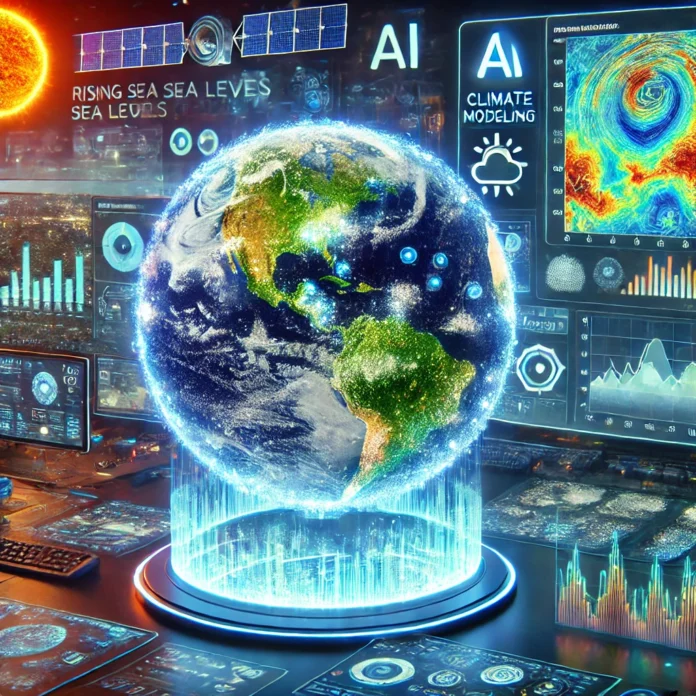Climate change is one of the most pressing global challenges, with its effects threatening ecosystems, economies, and human lives. Accurate predictions of climate patterns are essential for policymakers and scientists to devise strategies to mitigate and adapt to these changes. Artificial Intelligence (AI) is transforming the field of climate modeling by offering unparalleled precision, speed, and insights, enabling humanity to better understand and respond to a changing planet.
How AI Enhances Climate Modeling
Traditional climate models rely on complex equations to simulate interactions between the atmosphere, oceans, land, and ice. These models, while effective, often require significant computational power and time to process vast datasets. AI enhances this process in several ways:
- Data Processing: AI excels at analyzing enormous datasets, such as satellite imagery, weather records, and ocean temperatures, at speeds unmatched by traditional methods. Algorithms identify patterns and trends that might go unnoticed by human analysts.
- Prediction Accuracy: Machine learning models, such as deep neural networks, can make highly accurate predictions by learning from historical climate data. They are particularly effective at forecasting short-term weather events like hurricanes or droughts, as well as long-term climate trends.
- Real-Time Analysis: AI systems enable near-real-time analysis of climate data, allowing for faster responses to emerging environmental challenges, such as forest fires or extreme weather events.
Applications of AI in Climate Science
1. Weather Forecasting
AI improves the accuracy and timeliness of weather forecasts. For example, Google’s DeepMind has developed AI models that predict precipitation more accurately than traditional systems, offering significant benefits for agriculture, disaster preparedness, and transportation.
2. Disaster Prediction and Management
AI-powered tools like IBM’s Watson Studio analyze data to predict the likelihood and impact of natural disasters such as floods, wildfires, and hurricanes. These predictions allow governments and communities to prepare and allocate resources more effectively.
3. Carbon Emissions Monitoring
AI helps track carbon emissions from industries, vehicles, and natural sources. By analyzing data from satellites and ground sensors, tools like Climate TRACE provide insights into emission hotspots, aiding efforts to reduce global greenhouse gases.
4. Ecosystem Modeling
AI assists in simulating ecosystem changes due to climate impacts. For instance, AI models predict how rising temperatures affect biodiversity, helping conservationists protect vulnerable species and habitats.
Challenges and Limitations
Despite its promise, AI in climate modeling faces challenges:
- Data Quality: AI relies on high-quality, extensive datasets, which may not be available for some regions or historical periods. Gaps in data can lead to inaccuracies.
- Computational Costs: Training and running AI models require significant energy, potentially contributing to carbon emissions if not managed sustainably.
- Complexity of Climate Systems: While AI excels in identifying patterns, it struggles with the unpredictability and chaotic nature of some climate phenomena, limiting its effectiveness in certain scenarios.
Ethical Considerations
AI-driven climate modeling must be applied responsibly. Policymakers and scientists need to ensure that predictions are transparent, unbiased, and accessible to all stakeholders. Additionally, AI models should be paired with sustainable practices to minimize their environmental footprint.
Conclusion
AI is revolutionizing climate modeling by offering precise, data-driven insights into the Earth’s future. Its applications range from improving weather forecasts to managing disasters and monitoring emissions, making it an indispensable tool in the fight against climate change. While challenges remain, the integration of AI with climate science holds immense promise for protecting our planet and ensuring a sustainable future.





